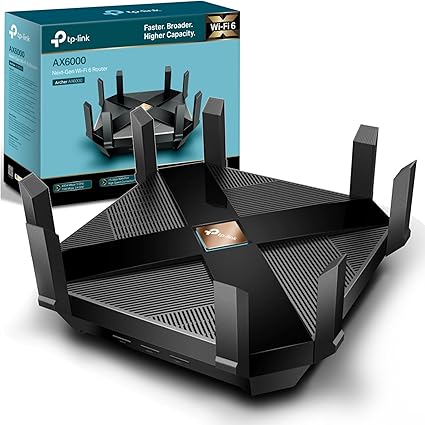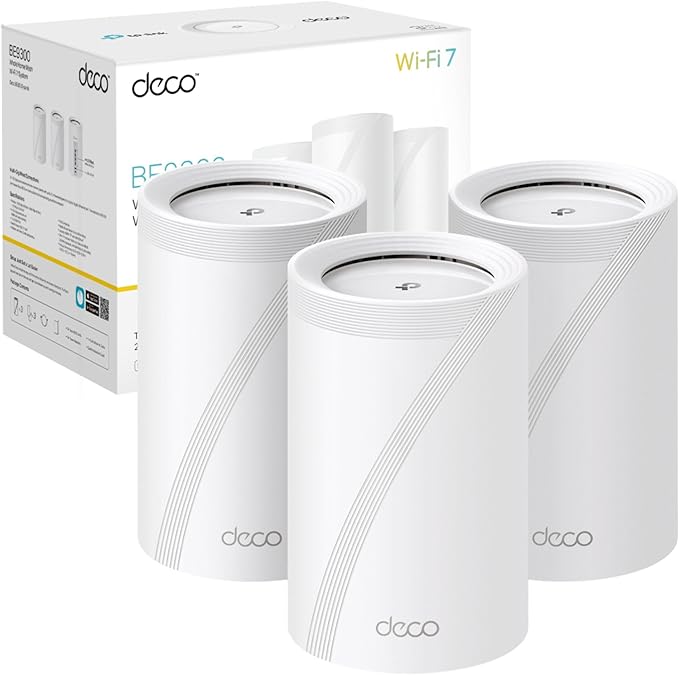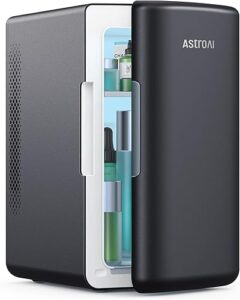Ever felt your Wi-Fi lag at the worst possible time? You’re not alone. With ever-increasing demands for speed and reliability, choosing the right Wi-Fi standard is crucial. As Wi-Fi 7 starts making headlines, many wonder how it stacks up against its predecessor, Wi-Fi 6. Both promise faster connections, but which one truly meets your needs? This post peels back the layers and demystifies the tech behind these buzzwords. Whether you’re streaming ultra-high-definition videos or juggling multiple smart devices, understanding these advancements could save you from future frustration. Dive in as we break down what these changes mean for you in 2024.
Overview of Wi-Fi Standards
As technology leaps forward, so too does the need for faster and more reliable Wi-Fi connections. Understanding the evolution from Wi-Fi 6 to Wi-Fi 7 can help you decide whether upgrading is worth it for your household or business needs. Below, we cover the key features and advancements of these two Wi-Fi standards.
What is Wi-Fi 6?
 Photo by Ron Lach
Photo by Ron Lach
Wi-Fi 6, also known as 802.11ax, was a major upgrade over the previous generation, offering higher speeds and improved performance in crowded environments. Key features of Wi-Fi 6 include:
- Faster Data Speeds: Provides up to 37% faster speeds compared to Wi-Fi 5, making it ideal for activities like streaming high-definition videos and online gaming.
- Improved Performance in Crowded Areas: Utilizes technologies such as MU-MIMO and OFDMA to better manage multiple connections, reducing latency in high-traffic areas like stadiums or apartment buildings.
- Increased Battery Life for Devices: Features Target Wake Time (TWT), which helps devices save battery by scheduling check-in times with the access point.
The benefits of Wi-Fi 6 align perfectly with environments where numerous devices need a robust connection. For instance, workplaces with multiple connected devices or households with a plethora of smart gadgets can greatly benefit from Wi-Fi 6’s capabilities. Learn more about its features and advantages here.
See our review of the Wi-Fi 6 TP-Link Archer AX6000 to see how good Wi-Fi 6 really is.
What is Wi-Fi 7?
Wi-Fi 7, the anticipated next iteration, promises to build on the foundation laid by Wi-Fi 6 with a host of new features and enhancements. These advancements include:
- Increased Bandwidth: Doubles the channel width to 320MHz, allowing for significantly higher throughput and improved data transfer speeds.
- Enhanced Modulation: Employs 4K QAM (Quadrature Amplitude Modulation) to increase capacity and efficiency, ensuring that even more data can be transmitted without losing quality.
- Reduced Latency: Implements clever mechanisms to decrease latency, creating a smoother experience for applications such as virtual reality and real-time gaming.
The improvements in Wi-Fi 7 particularly cater to environments demanding ultra-fast connections and minimal delays. This makes it a strong contender for businesses and tech enthusiasts eager to stay on the cutting edge. See our review of the Wi-Fi 7 TP-Link Deco BE65 BE9300 to see how good Wi-Fi 7 really is.
Comparative Speed and Performance
In today’s world, speed equals convenience, especially when it comes to Wi-Fi. Whether it’s for streaming, gaming, or day-to-day browsing, the latest Wi-Fi standards promise to deliver higher speeds and reliability. Let’s see how Wi-Fi 6 and Wi-Fi 7 stack up against each other in terms of speed and performance.
Speed Metrics of Wi-Fi 6
Wi-Fi 6 is a powerhouse when it comes to speedy connections. Theoretical maximum speeds can soar as high as 9.6 Gbps, a huge leap from the previous Wi-Fi 5 standard. While these numbers sound impressive on paper, real-world usage often paints a different picture. Think of it like owning a sports car that can theoretically hit 200 mph—you’re unlikely to reach that speed on a busy city street.
In practical terms, you’ll find speeds that are still incredibly fast, often reaching between 600 Mbps to 800 Mbps in mesh networks, depending on your setup and environment. To see some speed test results conducted on various Wi-Fi 6 devices, check out CNET’s performance analysis.
Real-world performance shows Wi-Fi 6 excelling in crowded spaces like apartment complexes or during high internet usage scenarios. With technologies like MU-MIMO (Multi-User, Multiple Input, Multiple Output) and OFDMA (Orthogonal Frequency Division Multiple Access), Wi-Fi 6 manages to juggle multiple devices without the dreaded bottleneck, almost like a skilled conductor leading an orchestra.
See our review of the Wi-Fi 6 TP-Link Archer AX6000 to see how good Wi-Fi 6 really is.
Speed Metrics of Wi-Fi 7
 Photo by Pixabay
Photo by Pixabay
When it comes to Wi-Fi 7, we’re talking hyperspeed. Theoretical speeds reach a jaw-dropping 46 Gbps. This is akin to a supersonic jet compared to Wi-Fi 6’s sports car. These blazing speeds are made possible by features like 16 simultaneous streams and a wider 320 MHz channel.
But does this translate into real-world gains? Yes and no. While the maximum speeds are likely overkill for most users, where Wi-Fi 7 truly shines is in high-demand environments. Imagine a bustling office with 100 devices or a high-tech home streaming multiple 8K videos simultaneously—Wi-Fi 7 handles it like a pro.
Technological upgrades such as 4K QAM (Quadrature Amplitude Modulation) significantly enhance performance by allowing more data to pass through the same bandwidth.
In summary, both Wi-Fi 6 and Wi-Fi 7 offer incredible speeds and reliable performance. But it’s all about choosing the right fit for your needs. If you’re running a smart home or a business with heavy data demands, Wi-Fi 7 might just be your best bet. Otherwise, Wi-Fi 6 already provides outstanding performance for most residential and small business setups.
Network Capacity and Efficiency
Understanding how different Wi-Fi standards handle network capacity and overall efficiency can make a world of difference in your experience. Whether you’re dealing with a house full of smart gadgets or running a bustling office, grasping these capabilities is crucial.
Device Handling in Wi-Fi 6
 Photo by Mikhail Nilov
Photo by Mikhail Nilov
In the fast-paced world of wireless technology, Wi-Fi 6 introduces clever tech like OFDMA and MU-MIMO to bump up capacity. Let’s decode what this means for you:
- OFDMA (Orthogonal Frequency-Division Multiple Access) breaks up a channel into smaller sub-channels. Imagine a bus that doesn’t wait until it’s full before leaving, but rather runs a continuous loop with multiple stops. This technology allows multiple devices to be served simultaneously, improving efficiency and reducing latency. For more details on how it works, check out this explanation by Cisco.
- MU-MIMO (Multi-User, Multiple Input, Multiple Output) is like having more lanes on a highway, allowing multiple cars (or data streams) to pass at once. With Wi-Fi 6, MU-MIMO works for both uploads and downloads, which means multiple devices can communicate with a router at the same time without bottlenecking. Learn more about the differences and advantages of these technologies here.
Both these technologies are key to enhancing network performance, ensuring seamless communication across numerous devices within the same network.
Device Handling in Wi-Fi 7
As we pivot to Wi-Fi 7, the game changes yet again with the introduction of Multi-Link Operation (MLO). Think of it as a supercharged version of Wi-Fi, offering you even more freedom in managing connections.
- Multi-Link Operation (MLO) allows devices to connect simultaneously across multiple bands and channels. Picture it like adding express lanes to your data highway, where high-priority traffic can zip through without delay. This feature not only enhances speed but also significantly improves network reliability. Dive deeper into the potential of MLO here.
With MLO, Wi-Fi 7 is poised to handle high-demand environments effortlessly, making it especially beneficial for applications like online gaming and 4K streaming, where every millisecond counts.
In this section, we’ve looked at how these Wi-Fi standards tackle the demands of modern connectivity. Each has its own set of tools to enhance your experience, whether at home or in a professional setting.
Latency and Gaming Performance
In the world of gaming, latency can make or break your experience. Whether you’re engaged in a tense online battle or navigating through a virtual world, the responsiveness of your connection is critical. Reduced latency means quicker feedback, which is crucial in fast-paced, competitive games. As we compare Wi-Fi 6 and Wi-Fi 7, we see significant differences in how they handle this crucial aspect.
Latency in Wi-Fi 6
Wi-Fi 6 has dramatically shifted how we experience online gaming and real-time applications. It’s designed to minimize latency, leading to smoother and more responsive gameplay. However, this doesn’t mean that Wi-Fi 6 is entirely free from latency challenges.
- MU-MIMO and OFDMA: These technologies are at the heart of Wi-Fi 6 improvements, allowing multiple devices to communicate more efficiently and reducing the bottlenecks typical in busy networks. This means less waiting and fewer lag spikes during intense gaming sessions. Check out this discussion on Wi-Fi 6 for gaming for more details.
- Latency Concerns: Despite the advancements, some users report experiencing latency spikes and inconsistent performance, especially in environments where interference is high. Issues like these are analyzed in this thread, where users discuss comparing Wi-Fi 6 with gigabit ethernet.
While Wi-Fi 6 offers a substantial upgrade from its predecessors, gamers still often turn to wired connections for the lowest latency possible.
Latency in Wi-Fi 7
Wi-Fi 7 appears poised to revolutionize gaming and real-time applications by further reducing latency to almost negligible levels.
- Latest Advancements: With the support for 320MHz channels and 4K QAM, Wi-Fi 7 significantly boosts bandwidth, which in turn mitigates latency. This ensures smoother and more responsive gaming experiences even amidst data-heavy applications. For a deeper understanding, check out Qualcomm’s insights on Wi-Fi 7.
- Perfect for Gaming: With lower latency and higher reliability, Wi-Fi 7 is expected to cater exceptionally well to competitive gaming environments and applications that demand real-time feedback. This Wi-Fi 7 overview highlights how these advancements improve online gaming and virtual reality experiences.
Ultimately, the leap from Wi-Fi 6 to Wi-Fi 7 holds the promise of a more stable, reliable, and nearly latency-free environment, which is crucial for gamers and professionals who rely heavily on real-time data transmission.
Use Cases and Applications
As Wi-Fi continues to evolve, each new standard opens up a world of possibilities for both personal and professional settings. The contrast between Wi-Fi 6 and Wi-Fi 7 highlights not just speed improvements, but also expands the range of potential uses. Let’s explore where each of these standards shines.
Typical Use Cases for Wi-Fi 6
 Photo by Eren Li
Photo by Eren Li
Wi-Fi 6 has become a staple in many homes and small businesses, offering reliable and speedy connections suitable for everyday needs.
- Home Networks: For families with multiple devices, from smartphones and laptops to smart TVs and tablets, Wi-Fi 6 ensures smooth streaming and browsing without annoying buffering. It’s ideal for streaming 4K content, making video calls, and online gaming, even in homes where many devices are connected simultaneously. Learn more about residential Wi-Fi 6 applications.
- Small Businesses: Wi-Fi 6 excels in environments like small offices where employees need to connect multiple devices for tasks such as video conferencing, accessing cloud services, and collaborating in real-time. The standard improves efficiency and reduces latency, boosting productivity. For detailed insights, check out the enterprise-centric exploration.
Future Use Cases for Wi-Fi 7
While Wi-Fi 6 handles today’s needs well, Wi-Fi 7 sets its sights on future tech demands, especially in advanced environments.
- Smart Homes and IoT: The future might see homes with dozens of smart devices—from appliances to security systems and AI assistants—requiring more bandwidth and reliability. Wi-Fi 7 caters to these needs with its enhanced capacity and reduced latency, ensuring all devices can function optimally without a hitch. Check how it integrates seamlessly with smart tech here.
- Enterprise and Industrial Usage: Wi-Fi 7 shines in large-scale operations, from corporate offices streaming high-definition video conferencing to industrial settings using IoT for automation. Its high throughput and low latency are perfect for high-stakes environments like augmented reality applications and real-time data analysis. The potential impact is further explored in this comprehensive guide.
Wi-Fi 7’s features unlock a new realm of possibilities, not just for tech enthusiasts but for industries pushing towards innovative connectivity solutions. Whether you’re all about the gadgets or running an enterprise, Wi-Fi 7 promises to be a formidable force in the next wave of technological advancements.
Cost and Accessibility
As we look at the evolution of Wi-Fi technology from Wi-Fi 6 to Wi-Fi 7, understanding the cost and accessibility of these devices is crucial. This section explores the current pricing landscape of Wi-Fi 6 devices and what we can expect from Wi-Fi 7 in terms of cost and availability.
Pricing of Wi-Fi 6 Devices
Wi-Fi 6 devices have become increasingly common and accessible, making them a solid choice for consumers and businesses alike. Depending on what you need, Wi-Fi 6 routers can vary in price:
- Budget Options: You can find basic Wi-Fi 6 routers for as little as $50. These are typically entry-level models, suitable for smaller spaces and average internet needs.
- Mid-Range Options: In the $100 to $200 range, you start to see dual-band routers with better coverage and additional features such as advanced network management tools.
- Premium Devices: High-end models can surpass $200, offering mesh networking, enhanced security features, and optimized performance for large homes or offices.
For more detailed information on the various options available, you can check out CNET’s list of the best Wi-Fi 6 routers or PCMag’s recommendations.
Pricing and Availability of Wi-Fi 7 Devices
As we anticipate the release of Wi-Fi 7 technology, pricing trends are yet to be firmly established. However, projections suggest:
- Initial Premium Pricing: Like any cutting-edge technology, early Wi-Fi 7 devices are expected to come with a premium price tag, potentially starting well above $300. This trend reflects both the novelty and the advanced capabilities they promise.
- Market Rollout: Despite the expected high initial cost, the market is poised for rapid expansion. Analysts predict that as more manufacturers enter the fray and production scales up, prices should become more competitive by 2030.
The global Wi-Fi 7 market is projected to surge from about USD 1.0 billion in 2023 to USD 24.2 billion by 2030, with a significant growth rate of over 57%. Explore the market analysis further in resources like Markets and Markets and GlobeNewswire.
In essence, while Wi-Fi 6 offers a range of affordable and versatile options, Wi-Fi 7 is expected to initially focus on those who want the latest and most powerful technology, before gradually becoming a more accessible option for the general consumer.
Conclusion: Wi-Fi 7 vs Wi-Fi 6
With the ever-evolving demands on our networks, choosing the right Wi-Fi standard is more vital than ever. While both Wi-Fi 6 and Wi-Fi 7 bring significant improvements to the table, the choice ultimately rests on your specific needs and future-proofing plans.
Key Comparisons and Recommendations
Choosing between Wi-Fi 6 and Wi-Fi 7 depends on what you value more: immediate efficiency or future-ready infrastructure. Here’s a quick rundown to guide you:
- Wi-Fi 6:
- Ideal For: Homes and small businesses with multiple devices. It excels in environments with high traffic thanks to its efficient handling of simultaneous connections.
- Affordability: Offers a range of budget-friendly options with robust performance capabilities. Ideal for those seeking a balance between cost and features.
- Wi-Fi 7:
- Best Suited For: Tech enthusiasts and businesses with demanding data requirements. The potential for ultra-fast speeds and minimized latency makes it a powerhouse for applications reliant on real-time data.
- Investment in Future: Initially high pricing, but it positions you at the forefront of wireless tech with capabilities designed to meet future network demands.
For more insights into which might best suit your needs, explore NETGEAR’s comparison and CommScope’s analysis.
Ultimately, both standards offer compelling advantages. Wi-Fi 6 is a solid, accessible choice for the present, whereas Wi-Fi 7 promises cutting-edge performance for those looking towards the future. As you consider upgrading, weigh your current network demands against potential future needs.




